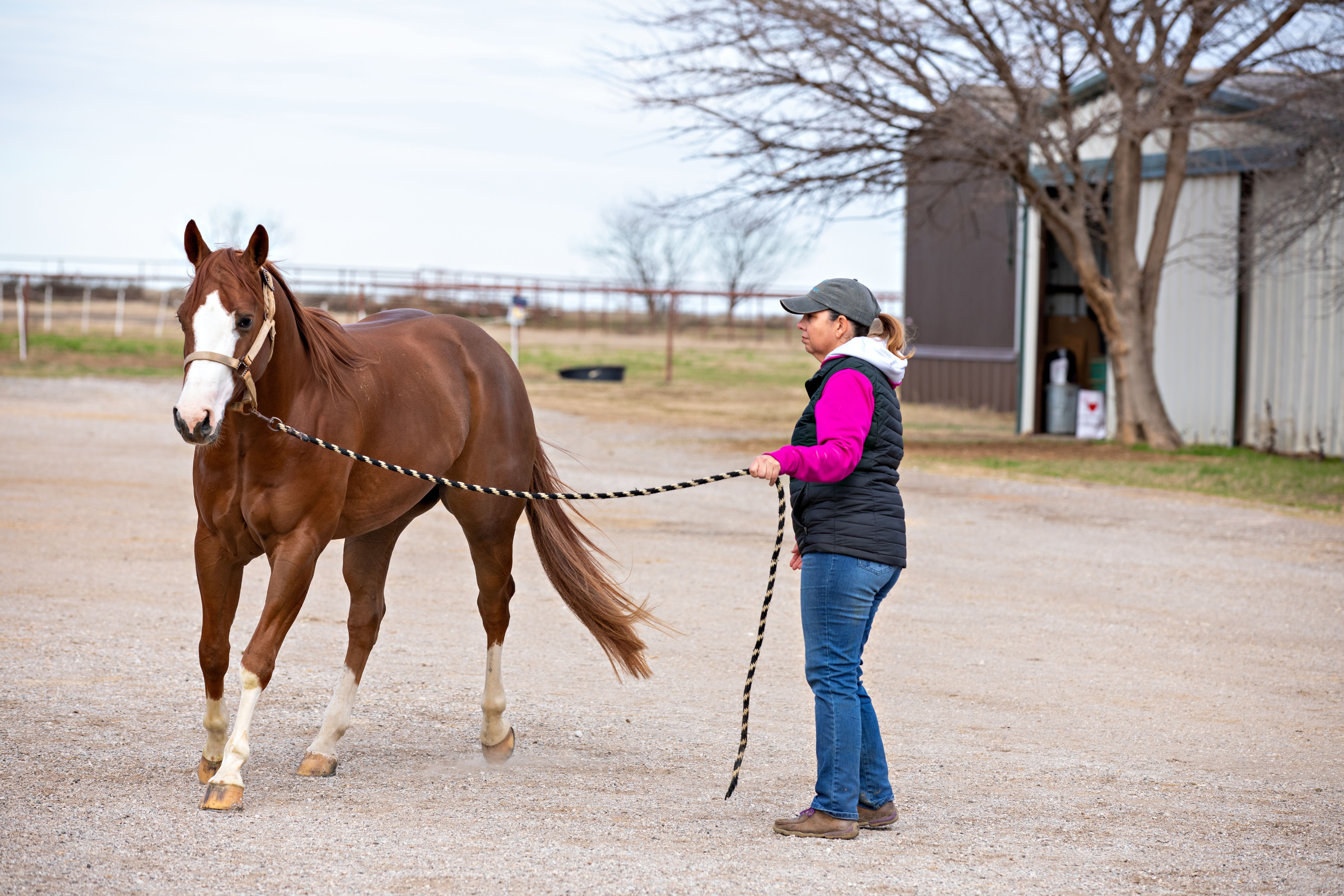A unique dish on the multitasking menu
Mistakes can happen when you try to do too many things at once. But sometimes those mistakes pay off in mysterious ways.
Working up lameness in a horse can be tricky. It is a task best accomplished with full concentration and focus, which is almost never possible. Most of the time we have 2 or 3 lameness workups going at the same time and are taking phone calls while we watch the horses trot. Sometimes that multitasking menu can offer a unique dish.
The workup
As fate would have it, we had 4 lameness cases going at the same time when a slow-talking cowboy of about 60 years of age showed up with Fred, his horse that was lame in the right hind leg. Treating Fred wasn’t going to be easy; 2 other veterinarians had already tried and given up, so they sent the horse to us. That’s OK. I love lameness cases, and the harder the better.
My former associate, Emily Berryhill, DVM, DACVIM, and I began the process of working up Fred as we shuffled through now 5 lameness exams simultaneously. As we watched Fred travel, we saw that the horse was very lame in the right hind leg, just as the slow-talking cowboy had said. So, off we went: flexion tests, hoof testers, trot uphill, trot downhill, palpate the leg, palpate the back, etc. It’s the same thing we have done 1000 times and part of the way we work up a lame horse.
The blocks
Berryhill then began the process of diagnostic blocks: No change with the low plantar digital block, abaxial sesamoid block, fetlock joint block, or low 4-point block. But the horse became much improved with the tibial nerve block. Even the slow-talking cowboy noticed how much better the horse was.
The only problem was that the horse was lame on its right leg. Our technician Shelly had scrubbed the left leg for the tibial block and, being busy and going in 5 different directions, Berryhill just blocked the joint that was scrubbed without even noticing it was the wrong leg.
The cowboy noticed it right off the bat but didn’t say a word. He just figured we knew what we were doing and continued to watch. To make things worse, we didn’t even notice it when we watched the horse trot. All we said was, “There ya go, that blocked fixed him, so we know about where it is now.”
I looked over at the slow-talking cowboy, who now had his hat in his hand and was scratching his head. He did not look relieved that we had pinpointed the area that was causing the pain. Rather, the expression on his face was one of confusion mixed with a touch of disbelief.
“Who would have thought?”
“Darndest thing I have ever seen in my life,” he said. “You guys are the smartest people I have ever seen. Who would have thought you could block a nerve on the left hind leg and make the right hind leg get better? I guess that is why you guys are the veterinarians and I’m just a cowboy.”
Good thing he was looking down at the hat in his hand when he said that or he would have seen the same expression on the faces of Berryhill, Shelly, and me. You know the one I’m talking about, when your eyebrows go up so high you no longer have a forehead, your eyes get so big that the white part is visible all the way around your cornea, and your lips form a shape that is almost like you're trying to whistle.
Don’t ask me what happened. You can’t fix right-leg lameness with a left tibial nerve block. But this guy was really impressed.
“No wonder none of them other vets could figure it out. Wasn’t a one of them ever did nothing with the left leg. You guys are great.”
Now what?
What do we do now? If we tell the guy it was an accident, then all those great compliments turn into just the opposite. And how in the heck are we going to explain how the thing got better?
After saying this, the cowboy called someone on the phone and started to walk away in conversation. I heard him start explaining to the person on the phone how we blocked the left leg and the right leg got better. As soon as he was around the corner, we all looked at each other for a long moment with a huge mix of emotions grinding through our brains but not a word spoken. I think it was Berryhill who started giggling first. This led to Shelly and then me and then eventually to the kind of laughter where no noise even comes out.
We must have laughed for 5 solid minutes. The story goes on, but I have run out of space here. What we did to treat Fred is almost as funny as the diagnosis. I guess most of these kinds of stories end with “and the moral of the story is…,” but not this one. We talked the cowboy into leaving the horse for more diagnostics the next day. We finally did figure out why he blocked this way. And we hope that Fred and the slow-talking cowboy will live happily ever after still thinking we are brilliant.
Bo Brock, DVM, who serves on the dvm360® Editorial Advisory Board, owns Brock Veterinary Clinic in Lamesa, Texas. His latest book is Crowded in the Middle of Nowhere: Tales of Humor and Healing From Rural America.
2 Commerce Drive
Cranbury, NJ 08512
All rights reserved.
